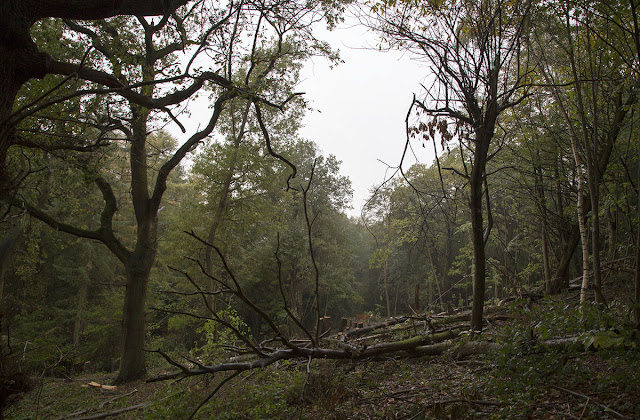 |
| Trees felled during coppicing in Spring Park, 6 November 2013. |
This is a Comtois, a French breed. The use of horses minimises damage to the woodland floor.
Coppicing refreshes the growth of some trees, and creates glades of different ages which provide habitats for plants, insects and birds and increase the diversity of the woods. The woods have been managed like this for hundreds of years, but now there is not the same demand for the produce, and we have to pay people to do the work. There were uses in the past we would not think of today. For example, in the mid 19th century many sweet chestnuts were planted here, and the chestnuts were supplied to London's bread makers.
This exercise concentrates on the Small-leaved Limes, Tilia cordata. There are many in these woods, including even a few seedlings, which is rare these days as they need a warmer climate than England can provide. But once established, they flourish. Branches that touch the ground can root in, and shoots can come from underground. They sprout easily from the coppice stools. Coppicing seems extreme, but does no harm at all to the population, and encourages healthy new growth.
 |
| Trees felled during coppicing in Spring Park, 6 November 2013. |
(This seems to be my 500th post in this blog, which surprises me!)

ReplyDeleteThose are beautiful images (not to mention that horse).
Did you take out the big camera this time?